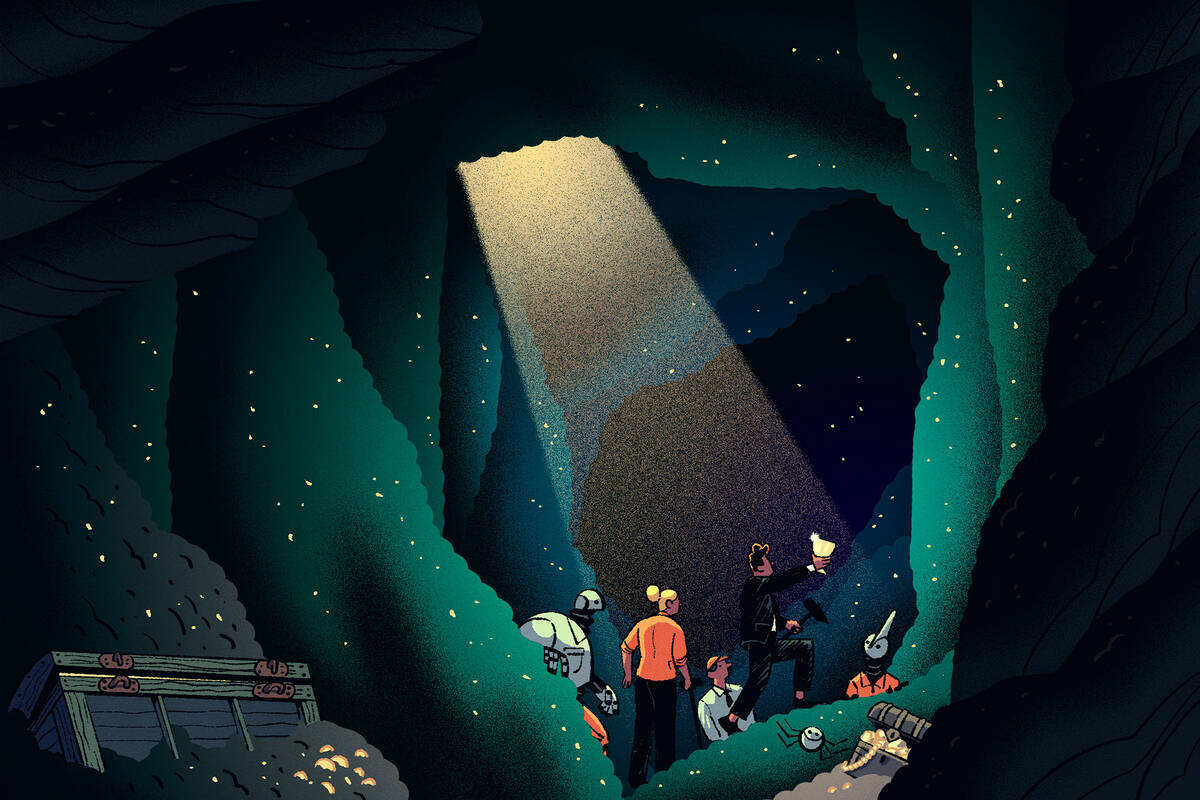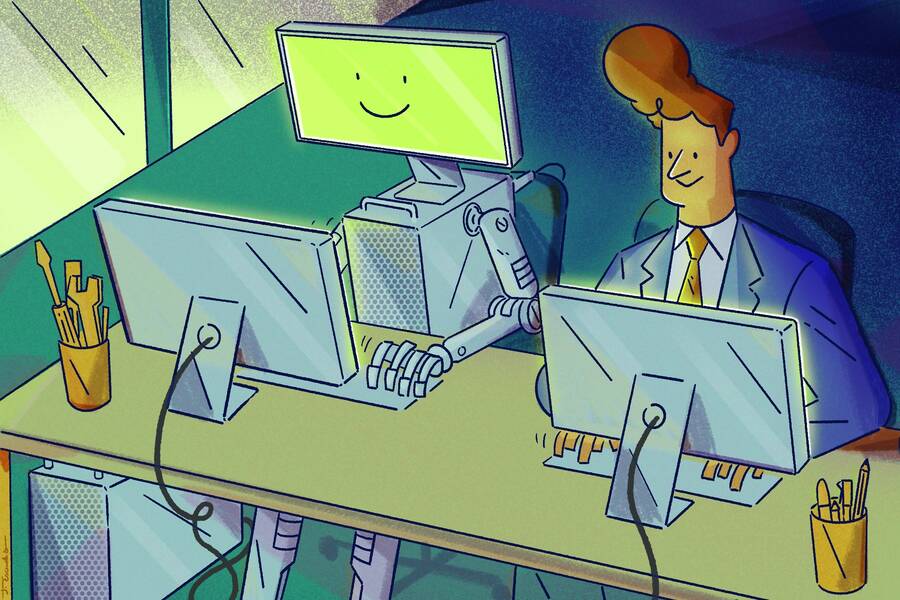Operations Jul 21, 2023
ChatGPT Has Arrived. What’s a Manager to Do?
4 tips for leading a team in an age of generative AI.

Michael Meier
ChatGPT and other large-scale language models are clearly here to stay. Proactive companies are already making changes to their operations, marketing plans, and data strategies to adjust to these new capabilities.
But how should managers adapt their roles to embrace ChatGPT?
Kellogg’s Robert Bray has given the topic a lot of thought. Not that he had much choice. Just last year, he published a textbook for MBA students on how to use the popular programing language R. Then came ChatGPT. The powerful language model could handle his students’ most challenging coding problems. And while a lot about ChatGPT remained (and remains) uncertain, one thing was instantly clear: his much-belabored textbook—and the entire course he had designed around it—was now obsolete.
So Bray regrouped and redesigned his course to incorporate ChatGPT. In the process, he grew to understand how the tool can be used to assist individuals with varying levels of expertise and interest, helping them to acquire new skills and solve novel problems. His verdict: it will change work—and management—in a big way.
“It’s like this weird cavern that’s opened up, full of weird treasures,” Bray says. Managers will need to help their teams “actively, creatively” find ways to use these new treasures to their advantage.
Bray recently sat down with Kellogg Insight to share his ideas for how managers can do just this.
You are leading an expedition: it’s time to get your team excited
ChatGPT empowers workers to be creative in novel and unexpected ways—so you should, in turn, empower your team to find these ways. Only by playing around with the tool will teams start to learn which tasks it’s equipped to help with, which it isn’t, and which tasks were never even remotely possible a year ago but are now as easy as entering a few prompts.
“ChatGPT enables a whole set of new things that you can do, but they’re very specific things, and they’re often kind of weird things that we never would’ve thought of before,” says Bray. “You need to actively go there and think about how to act.”
In most lines of work, “people have been doing things for a long time: all the tips and tricks are mostly figured out. But now, all of a sudden, a whole slew of tips and tricks that would’ve been absolutely impossible this time last year have been unlocked,” he says.
Take sentiment analysis: using computational tools to analyze text for evidence of how negatively or positively people think about a topic (often, a brand). This has historically been difficult for a machine to accomplish; previous measures, like tallying word frequencies, were very crude. But “ChatGPT just made sentiment analysis totally trivial,” says Bray.
“ChatGPT enables a whole set of new things that you can do, but they’re very specific things, and they’re often kind of weird things that we never would’ve thought of before.”
—
Robert Bray
In his course, Bray found that asking students to present on the tips and tricks they learned while solving problems was highly motivating. “Humans are intrinsically curious,” says Bray. “Once you get one person showing off something cool that blows the brain and makes everyone’s life easier, what I found was the students just became really excited.”
Managers, he suggests, should consider something similar. The stakes are high. “If you and your workforce are not going after [new opportunities] and creatively thinking about how to use this tool, your competition is,” says Bray. “You’re just going to lose market share to those guys.”
Align your incentives
Intrinsic motivation is powerful, but it will only take your team so far, particularly in workplaces where employees are used to competing against one another. Employees may also worry that any productivity gains they report will ultimately be used against them, perhaps by raising expectations about what they should accomplish to a degree that is unrealistic or unfair.
Bray advises offering a range of incentives—including monetary incentives—to individuals who discover and then share new ways of tackling the company’s problems.
As for productivity expectations, says Bray, flexibility will be key.
“You’re going to see dramatic productivity improvements, and you’re going to see productivity decreases: both are going to be the case,” says Bray. So rather than assume a priori how an employee’s workload is likely to be affected based on a back-of-the envelope calculation (or a single weeklong trial), managers will need to be patient, go with the flow, and work with employees to ensure ChatGPT is a welcome addition to the workplace.
Be open to the ways generative language models will change groupwork
This tip is fairly straightforward: with AI in the mix, some projects that used to require four people may only require two to generate the same number and quality of solutions. Keeping the same number of people on a job that uses ChatGPT can lead not just to a misallocation of resources, but to inefficiencies.
“Four people plus four ChatGPT sessions? It’s almost like eight people now, and that’s too many cooks. It’s too much noise for a coding project,” says Bray.
Moreover, groupwork itself may be on the chopping block, at least for some projects. Bray found that his students often preferred working alone (with ChatGPT) over collaborating with other students, particularly where the model’s output was instantly verifiable.
For highly collaborative teams, this could be big change and one that managers will need to think through carefully.
“Previously there were problems that were just so hard that we needed to throw people at them,” he says. Alternatively, long, tedious tasks such as writing a bunch of greeting-card messages might have been handed off to a group to divide up the labor.
Today, a single employee with ChatGPT is more efficient.
Be thoughtful about which projects to assign to whom
For tasks like coding, number-crunching, or investment analysis, ChatGPT allows entry-level employees to very quickly get up to speed. Where employees are invested in the success of their projects, this is a huge boon. “They’re going to learn more, they’re going to ramp up faster, they’re just going to be more productive,” says Bray.
But there’s a catch. “If your workers are not fundamentally interested in the problem that you’re working towards, they can now do a lot of the work with their brain off, and that means that they are not really even getting better.”
This means that the “fit” between an employee and their work has never mattered more.
Bray found that students who enrolled in his course as an elective, suggesting an inherent interest in learning R, were able to learn the material “faster and better,” while those who were required to take the course generally got less from the experience: “They didn’t want to be there. So they said, ‘Okay, so we’re just gonna offload all this work to the ChatGPT.’”
Bray sees it as inevitable that employees who use ChatGPT regularly will become reliant on it, at least initially. For those who are curious and engaged, this temporary downside is overshadowed by the upside of being able to get nearly instantaneous feedback from “the best tutor of all time,” says Bray.
But because it will now be possible to do passable work without engaging with the material as deeply, the long-term skill development and potential of less-motivated employees is likely to take a hit.
“If the person’s not interested in the work, this chatbot will make the person worse. Maybe not in the short run, but they’re not going to be coming up with continuous innovations,” he says.
For this reason, Bray argues, it is critical to assign employees tasks over which they can truly feel ownership. “All human beings are interested in some things,” he says. “Getting the match between the person and the problem area is all the more important now.”
Jess Love is the editor in chief of Kellogg Insight.



